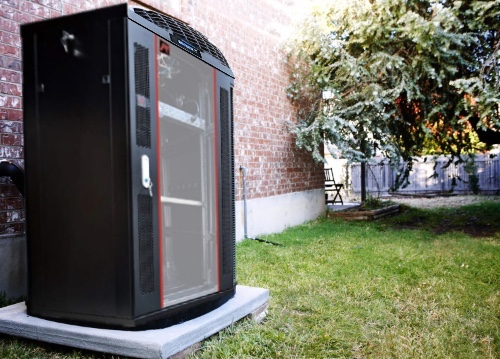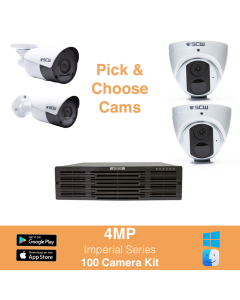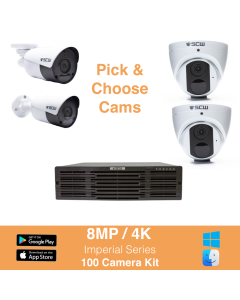No, NVRs are not "A Single Point of Failure"
Recently, a competitor started claiming that NVRs are a "single point of failure." In a proper setup, NVRs are not a single point of failure, your building's power is. Let's talk about reducing risk and how the company making this claim actually increases your risk.
What's the claim?
There's a security camera company that has been claiming that NVRs are a "single point of failure," and that they are being replaced by onboard camera storage.
Who is Making the Claim
This claim is part of a section of their sales pitch which, depending on the salesman, implies or directly states that only their equipment is secure. This sales pitch claims that the use of NVRs is somehow "outdated." This sales presentation spreads misinformation about the way that an NVR works.
Our NVRs Don't Have a Single Point of Failure
With a SCW system you can easily get nine different types of copies of the video if you want:
on-board camera storage storage on the NVR a hot-swap NVR (a backup NVR in a different on-site location) FTP backup of events with our Snapshot feature RAID on the NVR a backup via eSata through the NVR a NAS backup through the NVR
It's all Projection
Their sales presentation often presents the NVR as the "single point of failure." Let's talk about when security systems fail.
1. Each Camera is a "Single Point of Failure" in Their System
This company's solution only sends low-resolution thumbnails to the cloud, which means that if the camera is vandalized, there's no central repository for meaningful HD video data. That means that each camera is a single point of failure, in and of itself.
2. The Risks are Opposite What They Claim.
Cameras are vandalized frequently. NVRs are almost never vandalized. Every time one of their cameras is hit with a baseball bat or stolen, there will be data loss. This will be a common occurrence because vandalism is the most frequent security incident.
Almost all properties have multiple layers of security.
To disable a properly set up NVR based system, someone would have to enter the building, disable the alarm system, break the maglock or hack the access control system, know where the NVR and the Hot Swap NVRs are located, disconnect and steal the NVR, and then disconnect and steal all of the backups, many of which will not be common knowledge.
A camera mounted outside of your property that houses the ONLY surveillance data for that device is outside of all your additional layers of security. This is paramount to putting your surveillance data on a server outside your property.

3. Their Solution Increases Catastrophic Risks
Your real "single point of failure" security risk is having your power cut.
When using an NVR, you typically cable all your cameras to a central location where the POE switches are located. This is easy to integrate with a battery backup system since all your camera connections are in one place. One of their claims is that you can just plug the camera into your network. This sounds like a distributed system, but this is actually clumsy, confusing and overly complicated. The number of POE switches and battery backups this would require would be cost-prohibitive and difficult to maintain.
The logical response, even with their system, would be to centralize your camera POE power connections so that they are all on battery backups. If someone gained access to that area, they could cut all the cables, just like the way that if someone gained access to your NVR, they could steal the NVR.
In short, Their Proposed Solution Creates Multiple Points of Failure.

Additional Claims made by the Same Source
EXPOSED - No, NVRs are not "Outdated"
EXPOSED - No Gartner, Forester, and Symantec did not say NVRs are the TOP Security Risk
EXPOSED - No, HIPAA Compliance Doesn't Require 90 Days of Video Surveillance Footage
EXPOSED - No, You Probably Don't Need 90 Days of Video Surveillance Footage for PCI Compliance

Lean on the experts
We'd be happy to work up a custom quote or take your floorplan and create a security coverage map.
Get aCustom Quote






